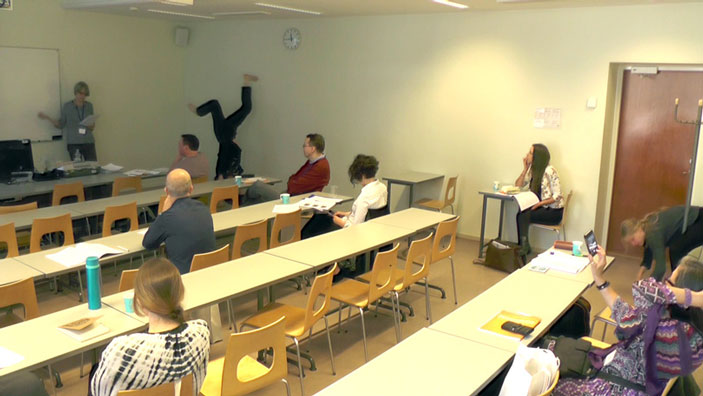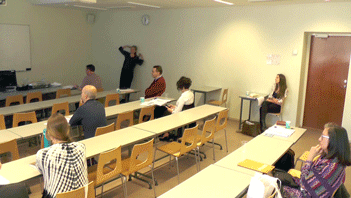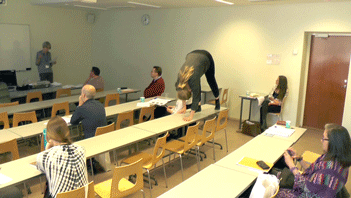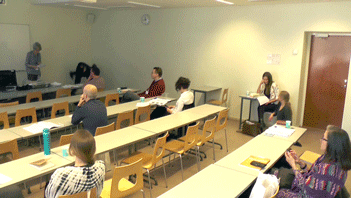Shifting from within: Boundary making in the Fragility of Presence | 2016
-

Cognitive Humanities Conference 2016, Helsinki, Finnland
with Anna-Leena Ryyppö and Sebstian López-Lehto
talk /movement performance – presented together with:
Anna-Leena Ryyppö – freelanced dance artist;
Sebastian López-Lehto – dance artist (University of Fine Arts Helsinki), capoeira dancer
Institutions, Cognitive Humanities Conference 2016, 13. – 15. June 2016, Helsinki, Finnland
Cognitive Futures in the Arts and Humanities is an international, interdisciplinary research network. It was originally supported by the UK’s Arts and Humanities Research Council (AHRC), 2012-14, and continues to bring together researchers at all career stages from fields such as literary studies, narrative theory, poetics, linguistics, philosophy of mind, phenomenology, history, the history of art, film, performing arts and theatre studies, and beyond, whose work relates to, informs, or is informed by aspects of the cognitive sciences broadly conceived..
(For further contributions of the event please refer to the conference website.)

with Anna-Leena Ryyppö and Sebstian López-Lehto
Shifting from within: Boundary making in the Fragility of Presence:
This proposal continues my research of the memacism project through a diffractive reading of A.Noë’s sensorimotor based enactivism as applied in his recent text ‘Concept Pluralism, Direct Perception and the Fragility of Presence’ and the subsequent commentary, developed on an social-enactivism account, by M. Kyselo1 with feminist readings of K.Barad’s Agential Realism as introduced by R.Coleman and P.Hinton2 among others.
The latter feminist new-materialist perspective regards subjectivity as dispersed and interwoven defining bodies as objects of knowledge, which are intra-actively involved in the bringing forth of meaning, though not because ‘we do the choosing [..] but because we are an agential part of the material becoming’3. Defining body/matter as having an ‘active role in the generation of perceptual meaning’4 and not merely as containers of mediation challenges definitions of a representational rational that is performed by a solitarily existing conscious mind.

with Anna-Leena Ryyppö and Sebstian López-Lehto
With reference to K.Barad’s concept of exteriority-within-phenomena
***
[1] Kyselo, M., “The Fragile Nature of the Social Mind” in Open MIND: 27(T), 2015
[2] Hinton, P.,“Situated Knowledges and New Materialism(s): rethinking a Politics of Location” in Woman: a cultural review, Vol.25, No.1, 2014
[3] Barad, K., Meeting the Univers Halfway, Duke University Press, 2007, p.178
[4] Machin, A., “Mouffe, Merleau-Ponty and Others: The View from Somewhere?”, in Parallax, Vol.20, No.2, 2014, p.77; Coole, D., “Rethinking Agency: A Phenomenological Approach to Embodiment and Agentic Capacities”, Political Studies, 53, 2005, p.128
[5] Noë, A., “Concept Pluralism, Direct Perception, and the Fragility of Presence” in Open MIND: 27(T), 2015
[6] Ibid.: p.13,14
[7] Coleman, R., “Inventive Feminist Theory: Representation, Materiality and Intensive Time” in Woman: a cultural review, Vol.25, No.1, 2014, p.38
[8] Barad, K., Meeting the Univers Halfway, Duke University Press, 2007, p.140: “The notion of agential separability is of fundamental importance, for in the absence of a classical ontological condition of exteriority between observer and observed, it provides an alternative ontological condition for the possibility of objectivity.”
[9] Haraway, D., “Situated Knowledges: The Science Question in Feminism and the Privilege of Partial Perspective” in Feminist Studies, Vol. 14, No.3, 1988, p.595

with Anna-Leena Ryyppö and Sebstian López-Lehto
Presentation: the text / paper presentation is accompanied by performer / movement people (parkour/traceur, dancer) from Helsinki or the surrounding region with whom I get in contact prior to the event
________________________